Beautiful Color Photographs Of England During The 1920s

The summers seemed brighter, the weather warmer, the days more leisurely. The First World War—”the war to end all wars”—was long over and the 1920s began as a decade of great prosperity. But by the 1925, the years of plenty were over. The gap between rich and poor widened, with unemployment rife and beggars—many old soldiers—a common sight on the cities’ streets.
In 1926, a General Strike almost brought the government down when unions showed solidarity with one million mine workers who had been locked out of the mines by owners who wanted them to work more hours for less pay—a drop of 13% of the miners’ wages. Where farming had once thrived, one in four farms were sold during the 1920s to pay to financial obligations—over 600,000 farmers went bankrupt.
Families were of a smaller size compared to Victorian families, with children educated until the age of fourteen. There was more freedom for middle class and upper class women, with women over 30 given the vote in 1918, which was finally extended to all women over the age of 21 in 1928.
In 1928, photographer Clifton R. Adams was commissioned by the National Geographic to document life in England. Adams’ beautiful Autochromes—a process of producing color images by using potato starch—present images that are seemingly at odds with the historical reality of the time, capturing the last of an England that was on the cusp of an irreversible change during the about the 1930s Depression.
A policeman directs buses in the intersection of Trafalgar Square, London.
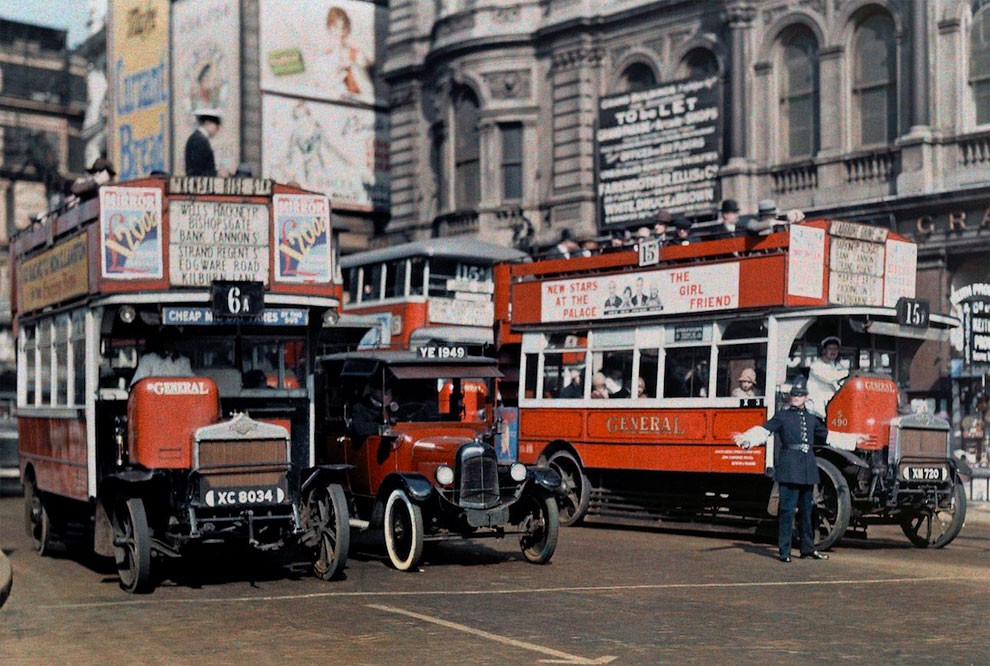
IMAGE: CLIFTON R. ADAMS/NATIONAL GEOGRAPHIC CREATIVE/CORBIS
An English woman points pridefully to her farm cart, in Cambridgeshire, England. Wicks of Wisbech constructed horse-drawn caravans used by Romany families traveling throughout Britain.
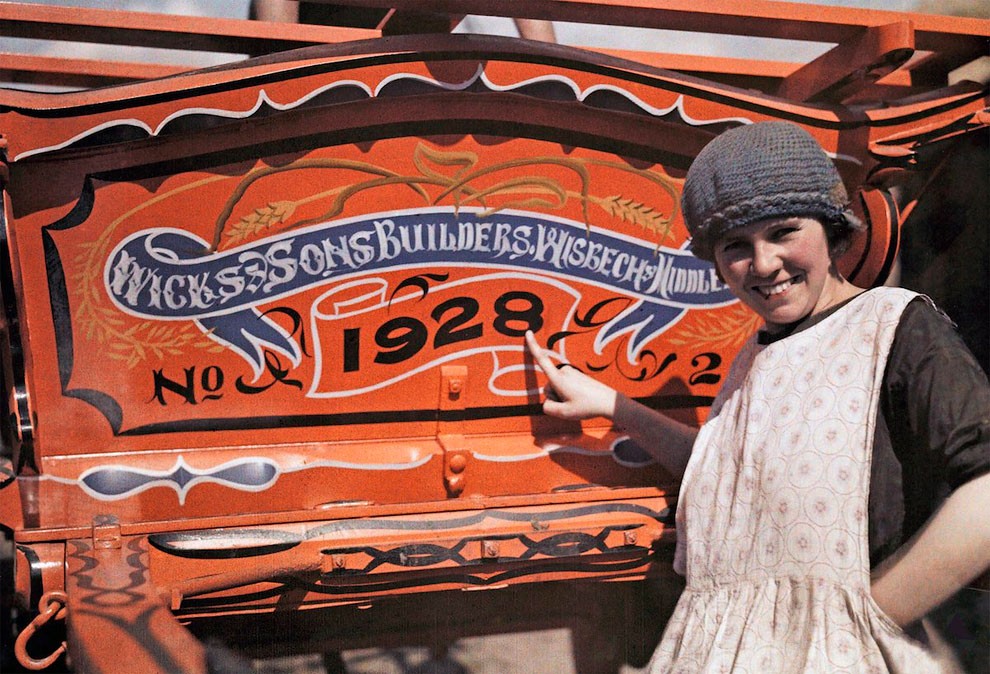
IMAGE: CLIFTON R. ADAMS/NATIONAL GEOGRAPHIC CREATIVE/CORBIS
An informal portrait of a farmer and his cart, in Crowland, Lincolnshire. Decoy Farm is now the site of a recycling centre and a housing estate.
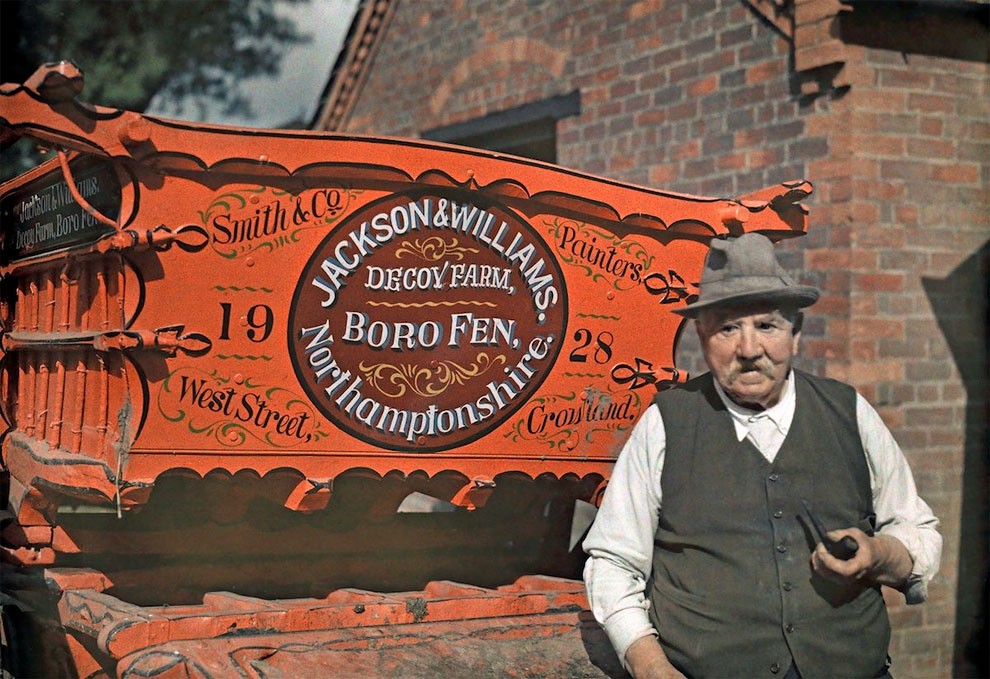
IMAGE: CLIFTON R. ADAMS/NATIONAL GEOGRAPHIC CREATIVE/CORBIS
A police constable passes the day with farmers gathering hay, in Lancashire.
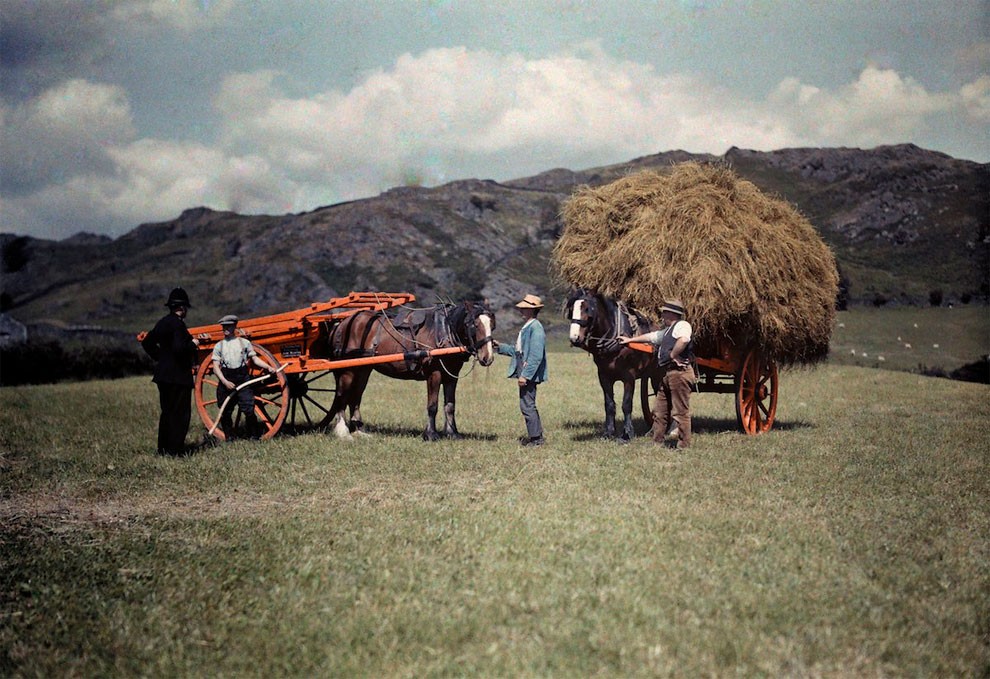
IMAGE: CLIFTON R. ADAMS/NATIONAL GEOGRAPHIC CREATIVE/CORBIS
Two women rest for lunch in a Lancashire hayfield.
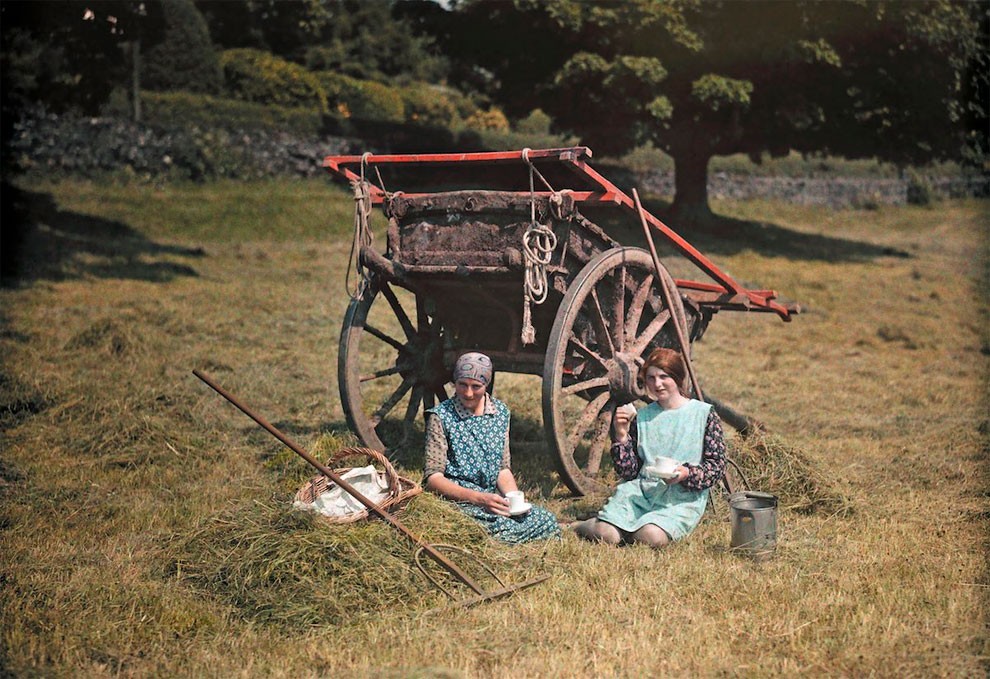
IMAGE: CLIFTON R. ADAMS/NATIONAL GEOGRAPHIC CREATIVE/CORBIS
A young girl plays in the sand at Sandown, Isle of Wight.
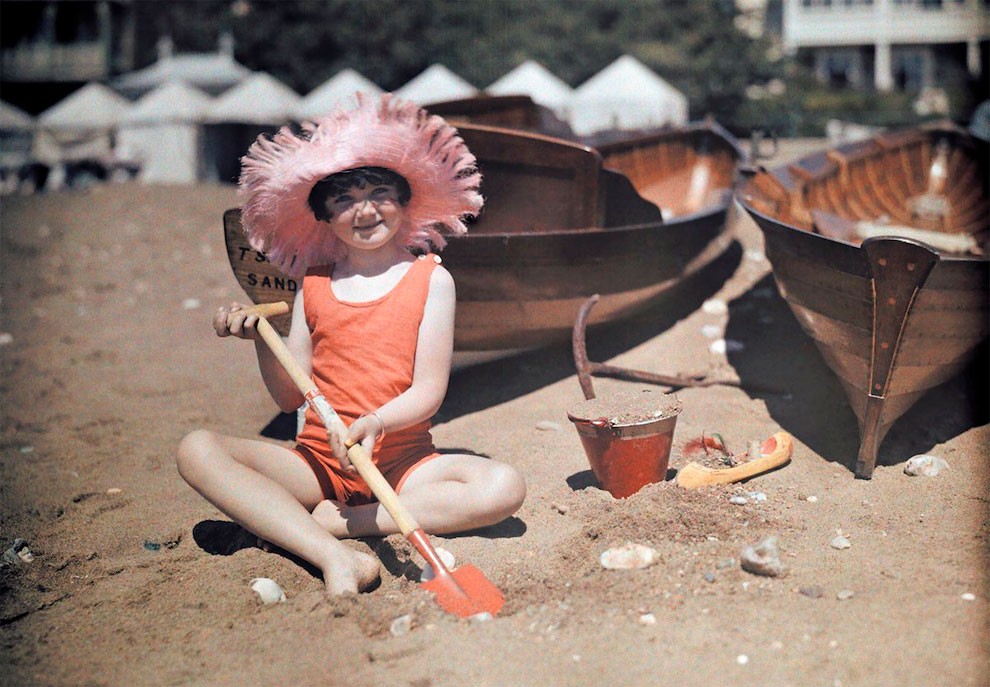
IMAGE: CLIFTON R. ADAMS/NATIONAL GEOGRAPHIC CREATIVE/CORBIS
Actors dress for a pageant as Britannia and her knights.
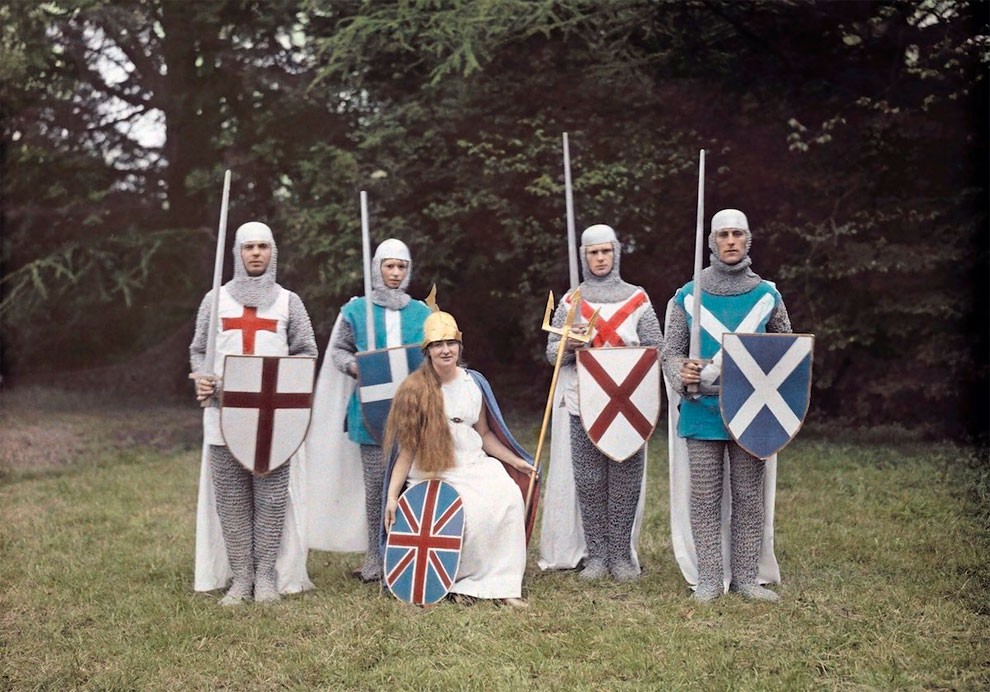
IMAGE: CLIFTON R. ADAMS/NATIONAL GEOGRAPHIC CREATIVE/CORBIS
The characters of Britannia and her colonies and dependencies, in Southampton, Hampshire.

IMAGE: CLIFTON R. ADAMS/NATIONAL GEOGRAPHIC CREATIVE/CORBIS
Two women buy ice cream from a vendor out of his converted car, in Cornwall. Kelly’s ice cream is still in production today.

IMAGE: CLIFTON R. ADAMS/NATIONAL GEOGRAPHIC CREATIVE/CORBIS
A woman sticks her head out of her bridge house window, in Ambleside, Lake District, Cumbria, England.
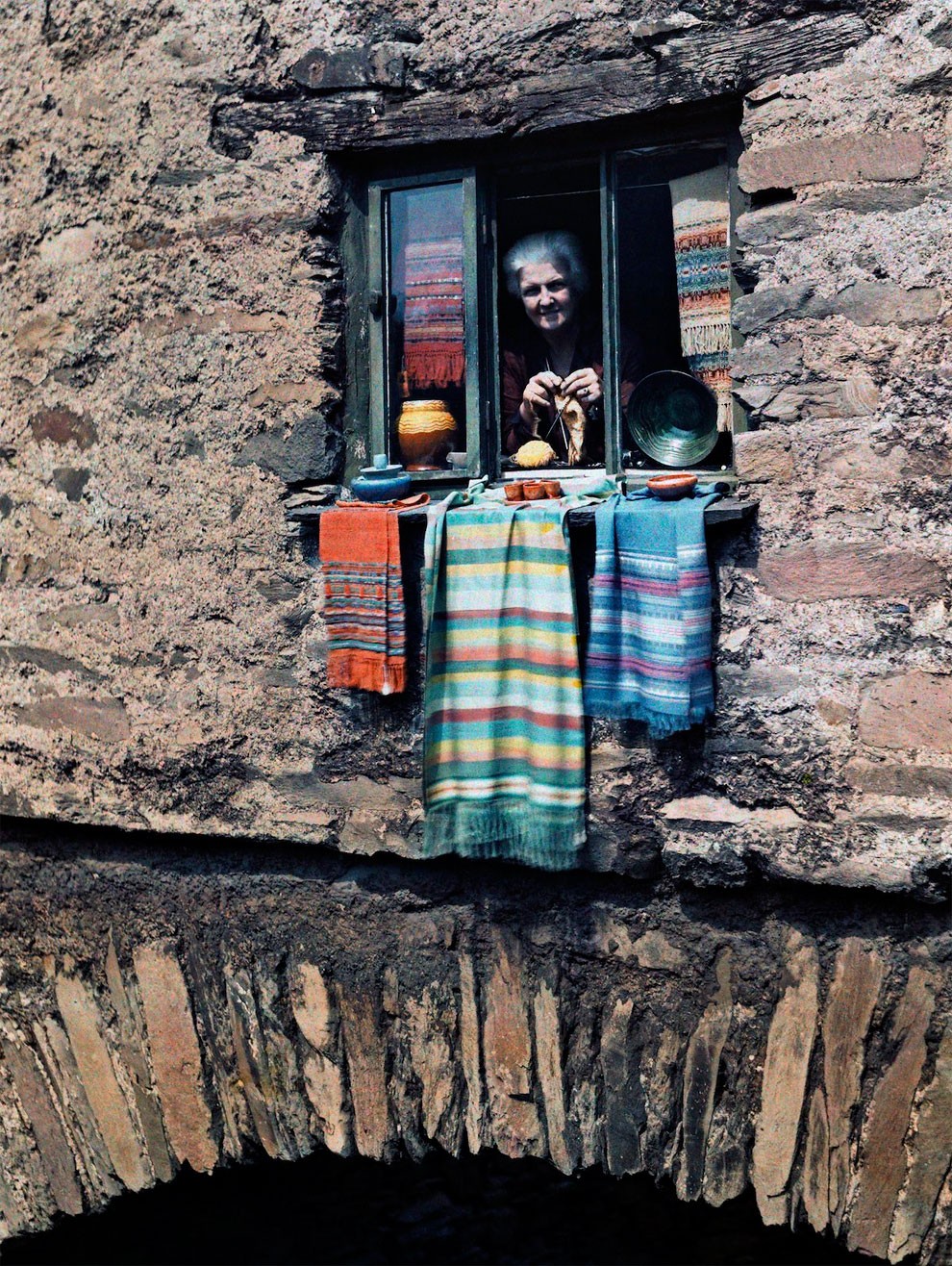
IMAGE: CLIFTON R. ADAMS/NATIONAL GEOGRAPHIC CREATIVE/CORBIS
A war veteran sells matches on the street, in Canterbury, Kent.
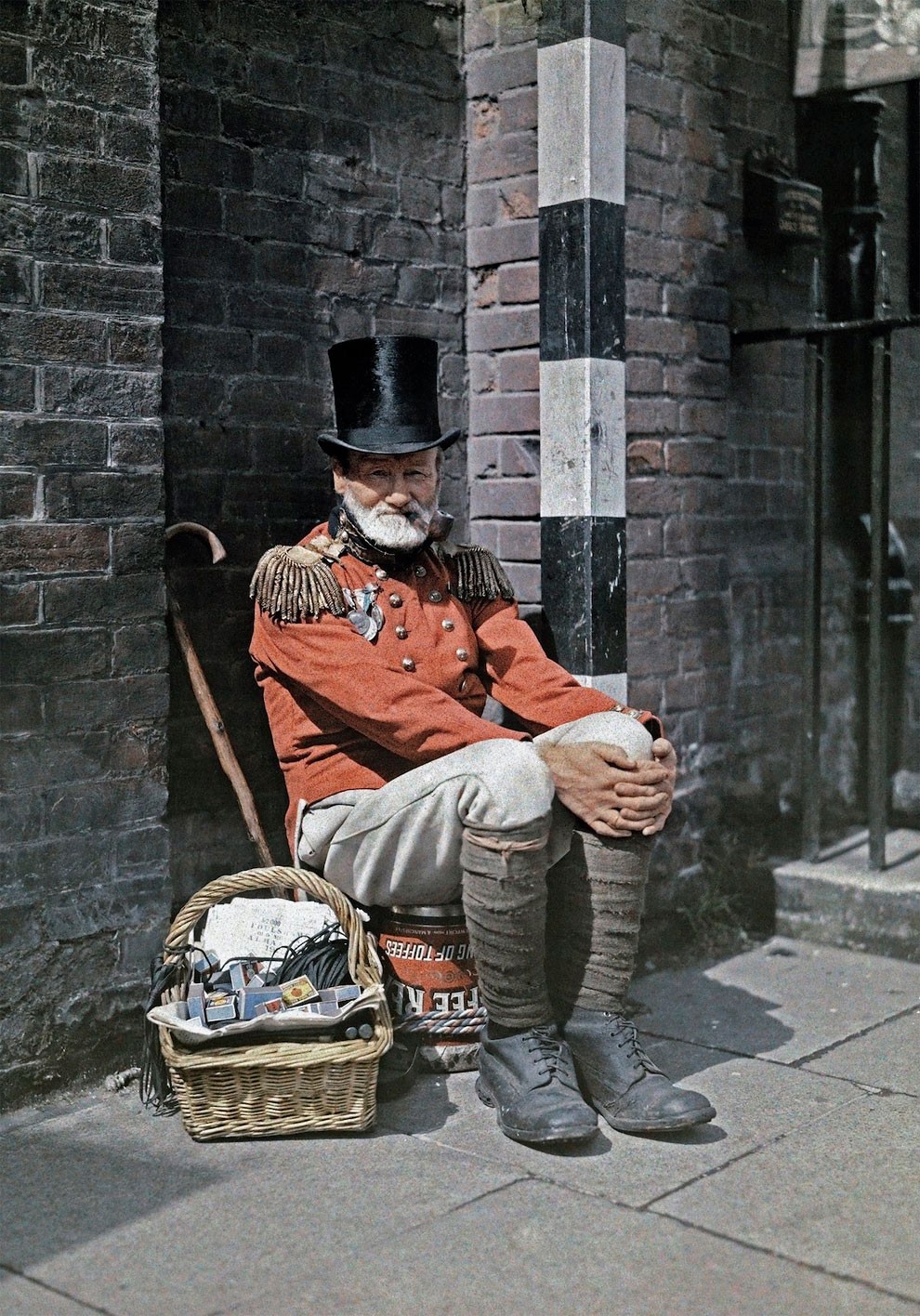
A young girl sells artificial flowers for charity on Alexandra Day, in Kent. The first Alexandra Rose Day was held in 1912; it commemorated the arrival in Britain of Princess Alexandra of Schleswig-Holstein-Sonderburg-Glücksburg, from Denmark, in 1862. She was betrothed to Prince Edward, later King Edward VII, and they married the next year. Her admirers wished to mark the 50th anniversary of her arrival and she proposed marking it by the sale of paper roses in aid of her favourite charities. The day became an annual occasion.
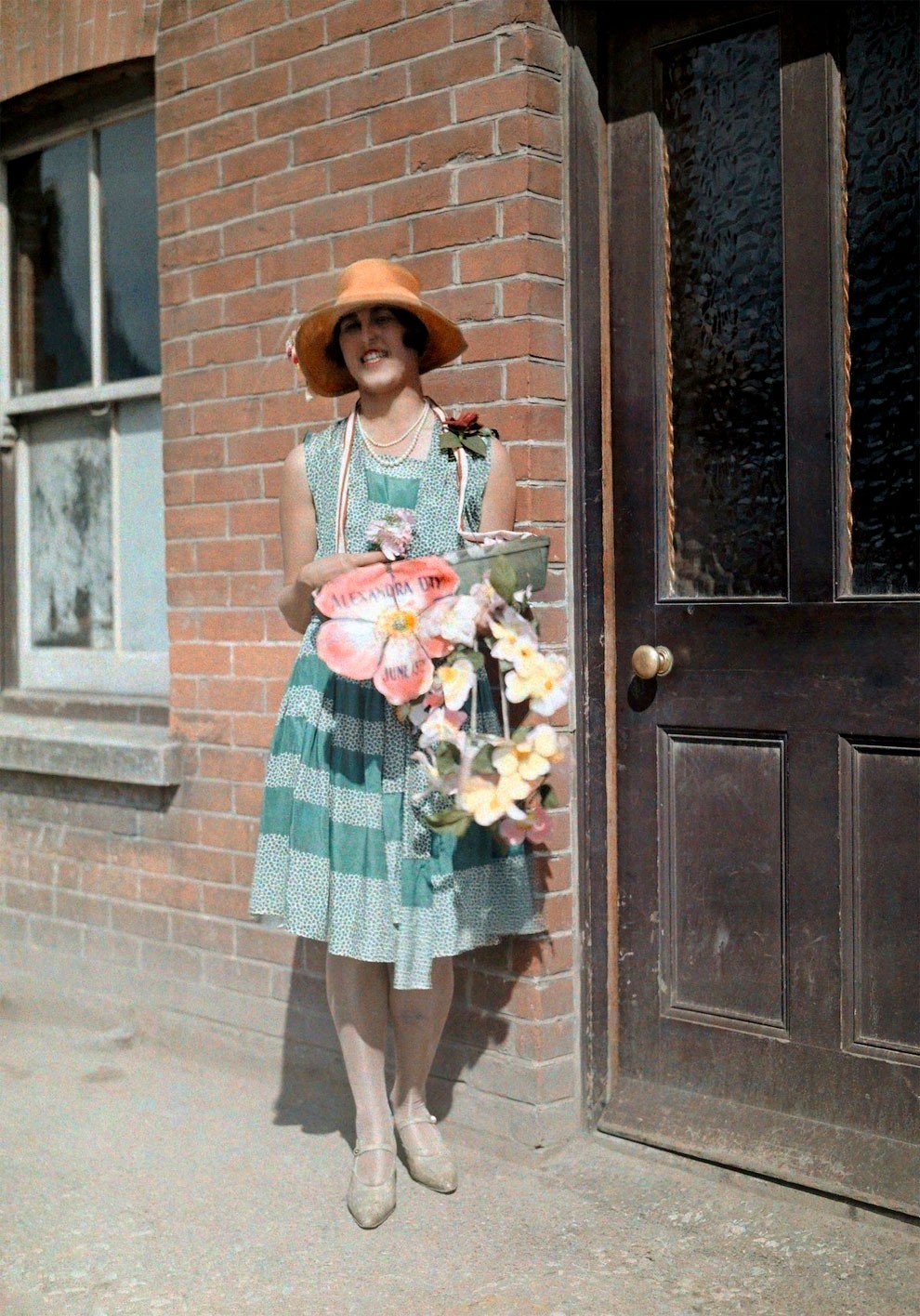
IMAGE: CLIFTON R. ADAMS/NATIONAL GEOGRAPHIC CREATIVE/CORBIS
Women selling Queen Alexandra roses for charity, in Seaford, East Sussex.
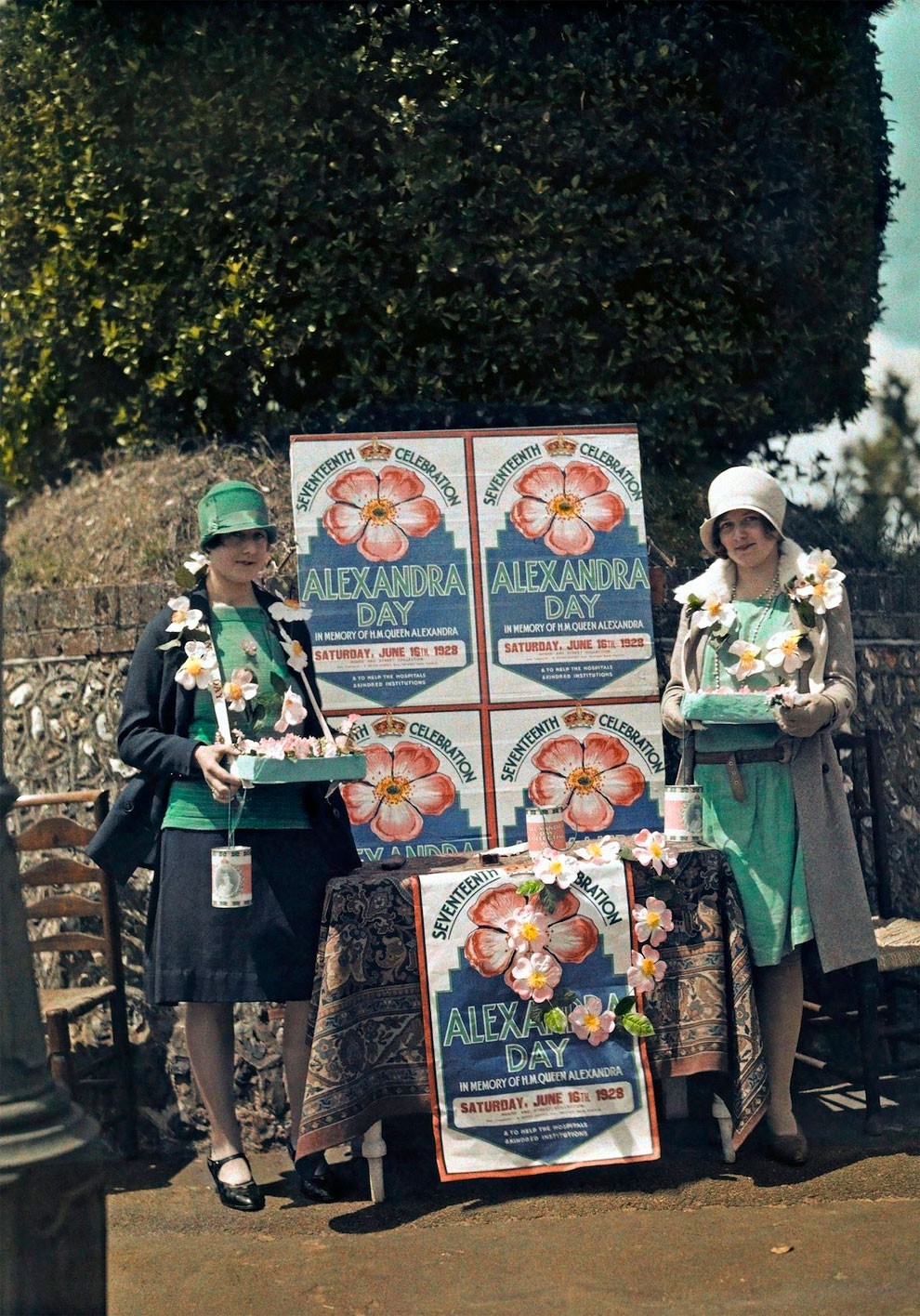
IMAGE: CLIFTON R. ADAMS/NATIONAL GEOGRAPHIC CREATIVE/CORBIS
Two bus drivers stand in front of a tour bus in Ulverston, Cumbria.
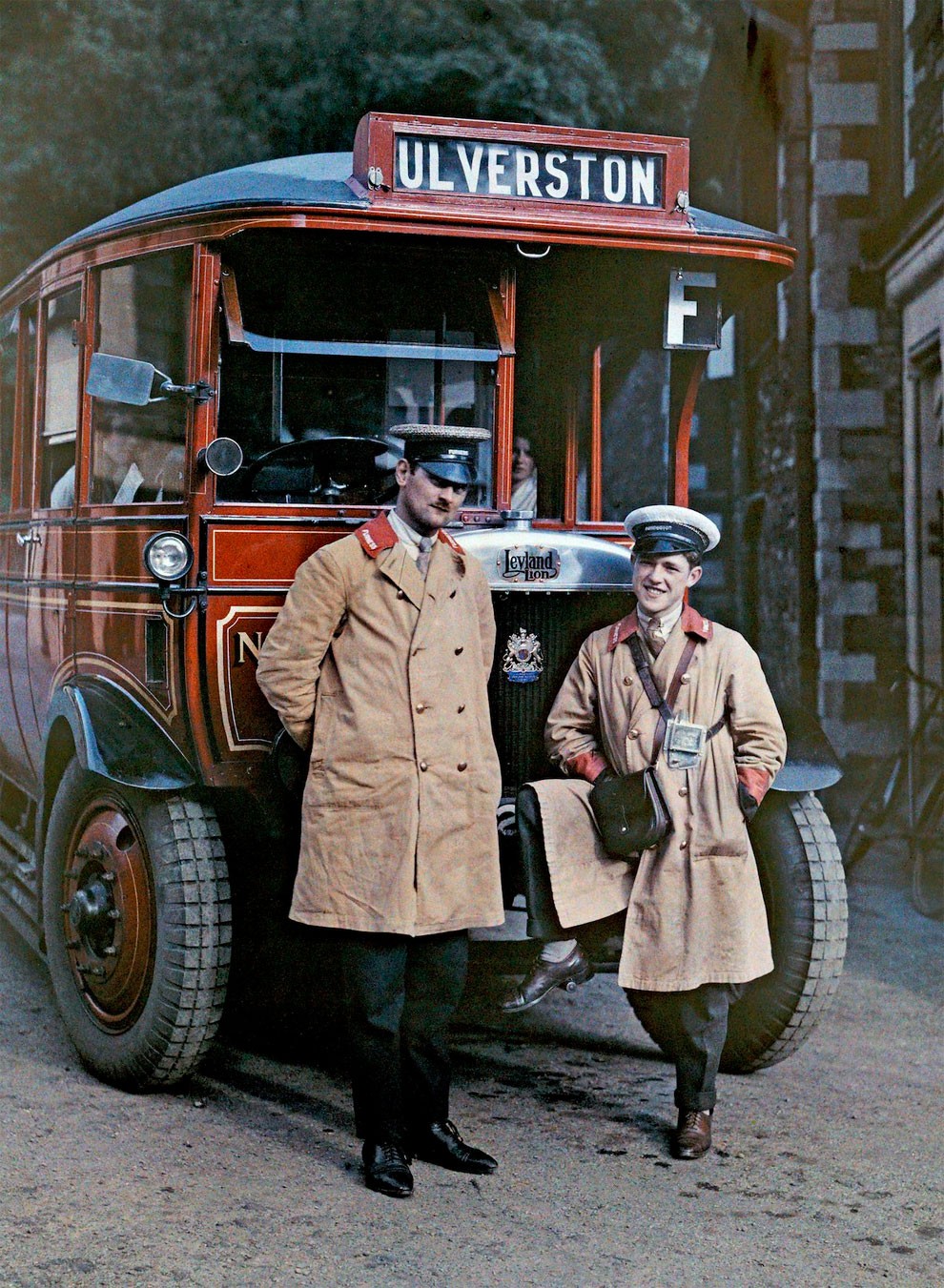
IMAGE: CLIFTON R. ADAMS/NATIONAL GEOGRAPHIC CREATIVE/CORBIS
In Oxford, the corner of High street and Cornhill is bustling.
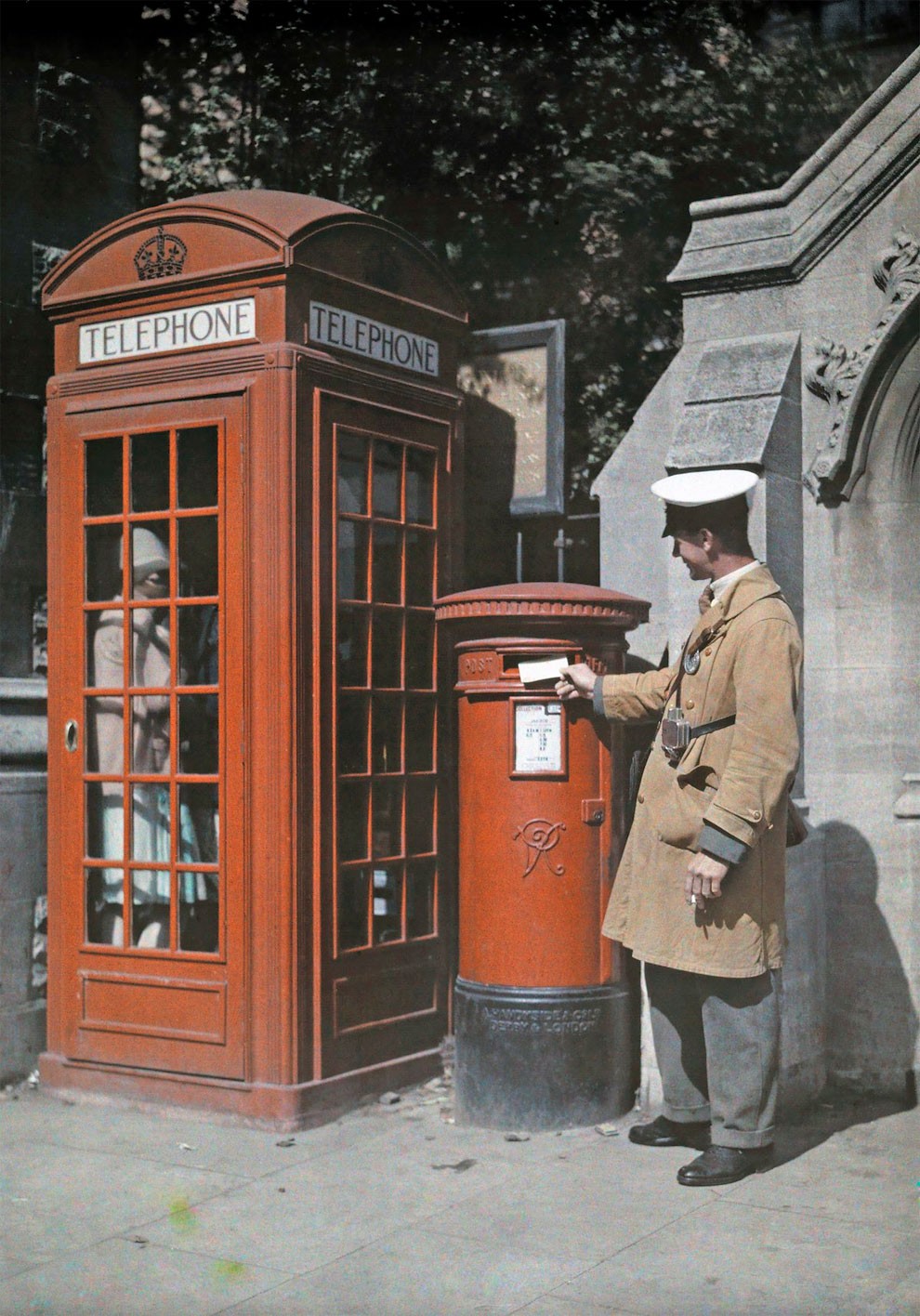
IMAGE: CLIFTON R. ADAMS/NATIONAL GEOGRAPHIC CREATIVE/CORBIS
A view of the Cunard SS “Mauretania” at dock, in Southampton, Hampshire.
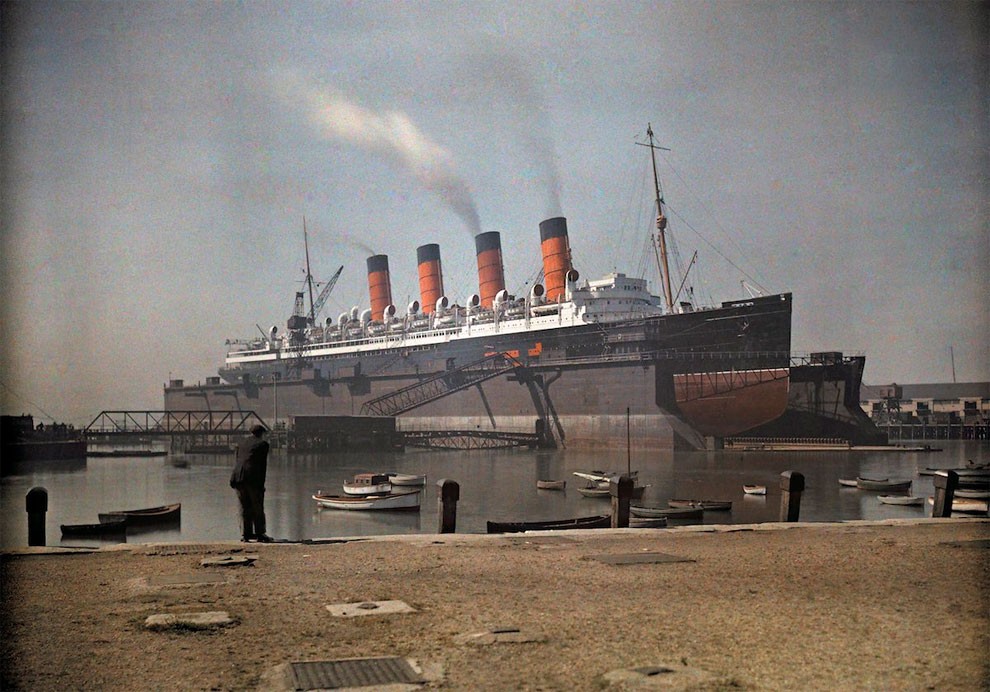
IMAGE: CLIFTON R. ADAMS/NATIONAL GEOGRAPHIC CREATIVE/CORBIS
A view of a vine-covered house on a Stratford-upon-Avon street, in Warwickshire.
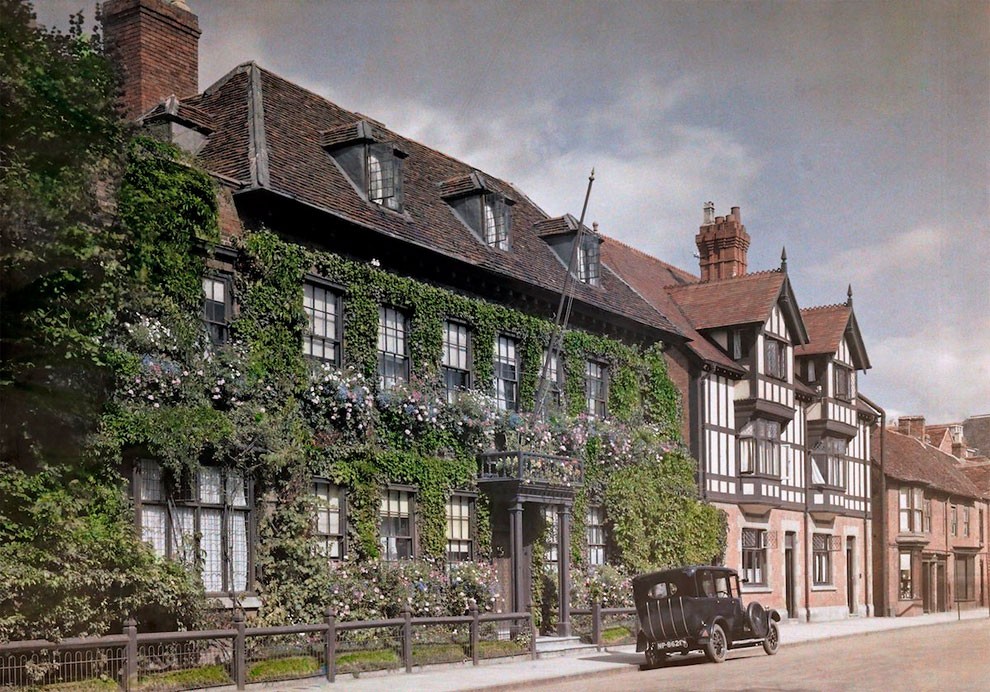
IMAGE: CLIFTON R. ADAMS/NATIONAL GEOGRAPHIC CREATIVE/CORBIS
A young woman mails a letter at the pillar box, in Oxford.
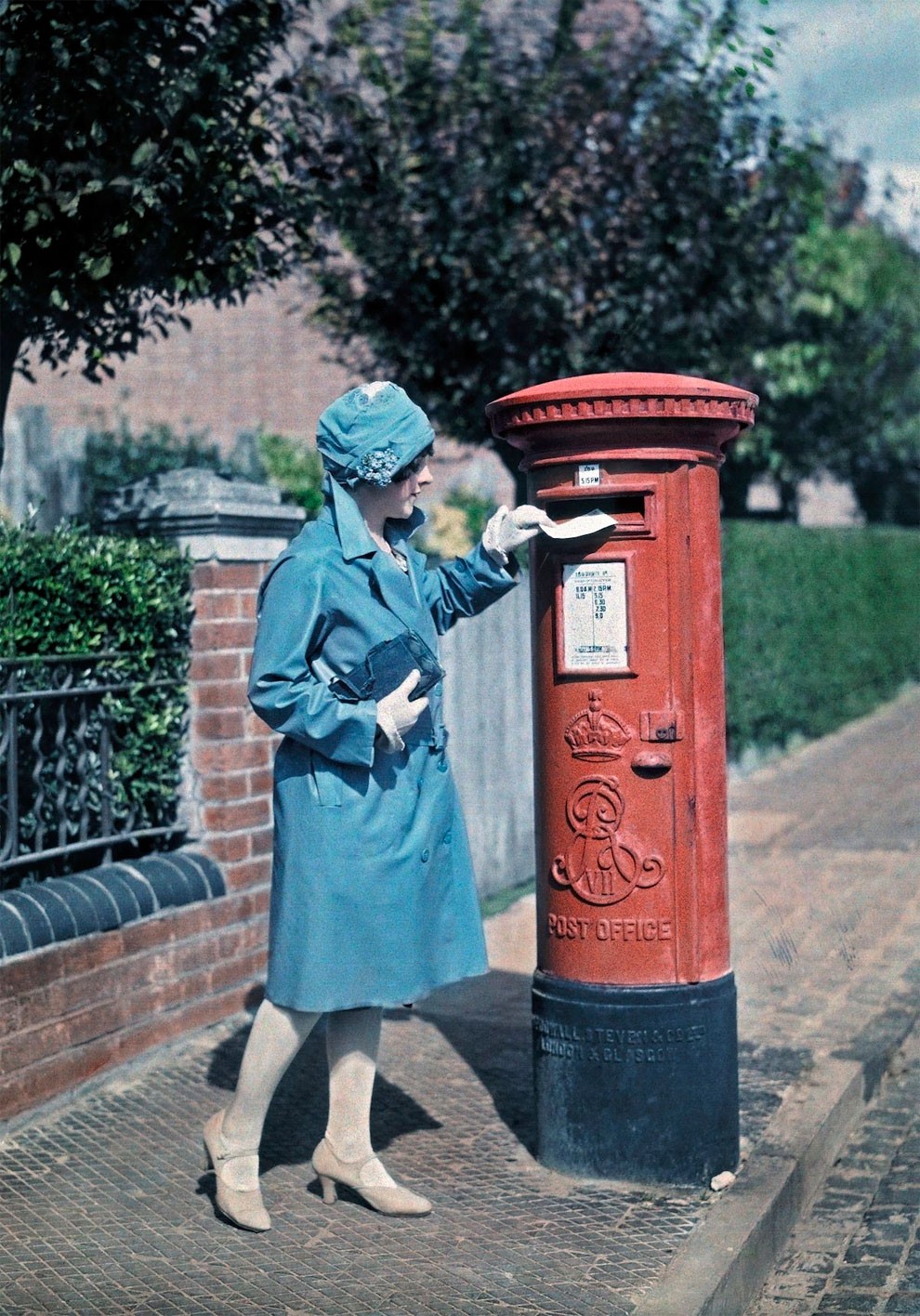
IMAGE: CLIFTON R. ADAMS/NATIONAL GEOGRAPHIC CREATIVE/CORBIS
Women have tea in front of the Clock House, originally a hospice, in Buckinghamshire.
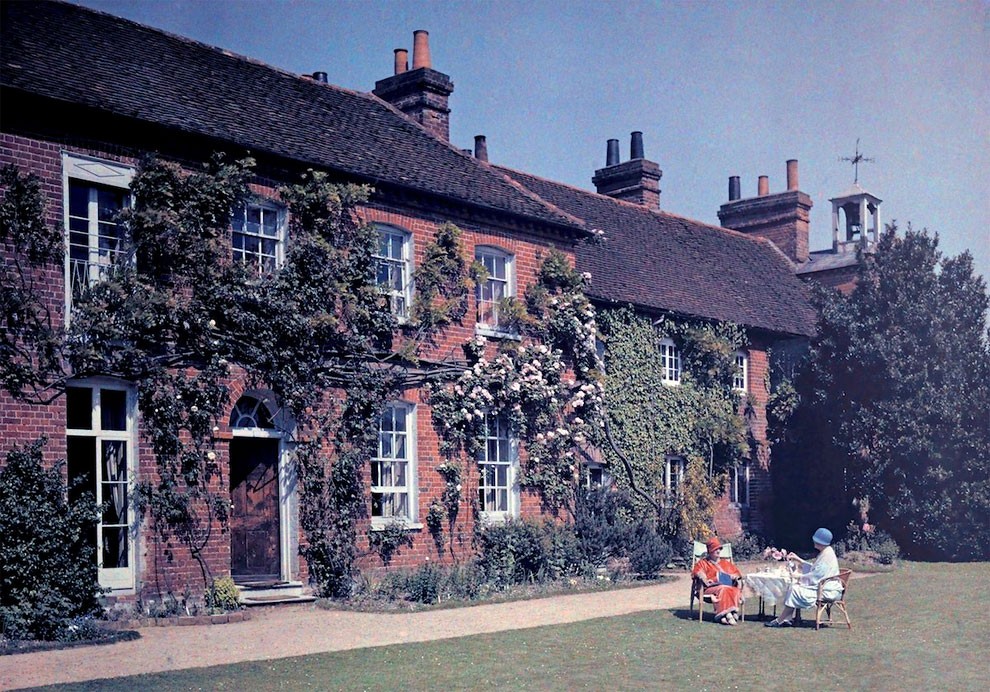
IMAGE: CLIFTON R. ADAMS/NATIONAL GEOGRAPHIC CREATIVE/CORBIS
A little boy mails a letter in the hedgerow, in Sussex.

IMAGE: CLIFTON R. ADAMS/NATIONAL GEOGRAPHIC CREATIVE/CORBIS
A London double-decker bus stops to allow people aboard.

IMAGE: CLIFTON R. ADAMS/NATIONAL GEOGRAPHIC CREATIVE/CORBIS
Via Mashable, Dangerous Minds